Robes have always been in fashion, they appeared in Turkey since the 15th century. They were used not only as an item for home style, but were also used for various social outings. This article tells how to sew a robe with your own hands quickly and without a pattern and what is needed for this.
Advantages of a robe without darts
A product made using this technology has no darts or buttons. This is its main advantage. Even a novice craftswoman can handle the job. The winter style of the robe is made according to this pattern. It is advisable to choose a dense material for the robe. Terry cloth is perfect. You will need more material because sleeves are added for the winter style.
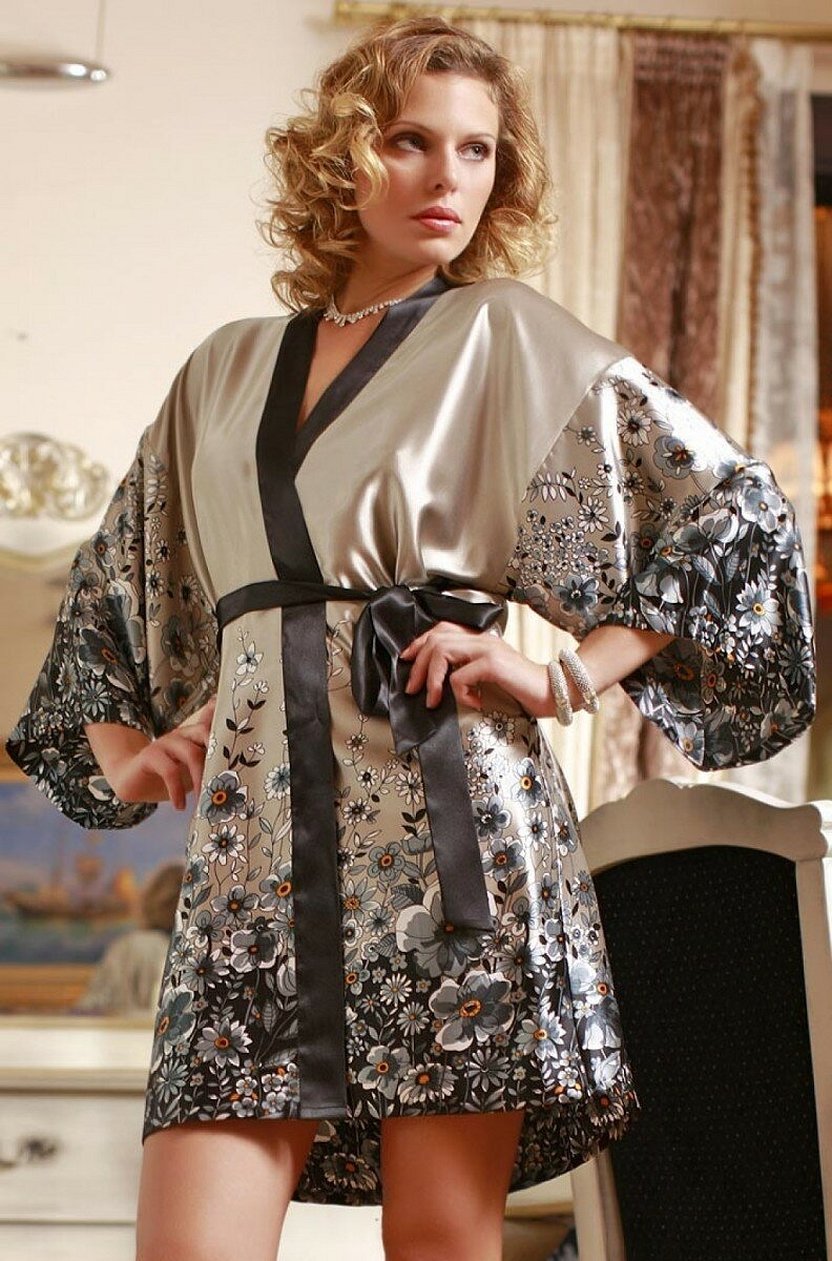
The sleeve width is calculated by the armhole on the side, and a belt should also be sewn in. For comfort, you can sew small straps along the waistline so that the garment does not open up to the décolleté area. Don't be afraid to experiment, this style is very easy.
It is important to remember that chintz visually increases volume and hardly stretches, so discomfort may occur during use of the robe. Viscose or delicate knitwear are excellent. It is advisable to choose a fabric with a small content of elastane.
Choice of fabric
If you need to use the product as a bath product, it is better to use waffle fabric.
This airy cotton fabric is moisture-wicking, dries quickly, and is easy to sew and decorate.
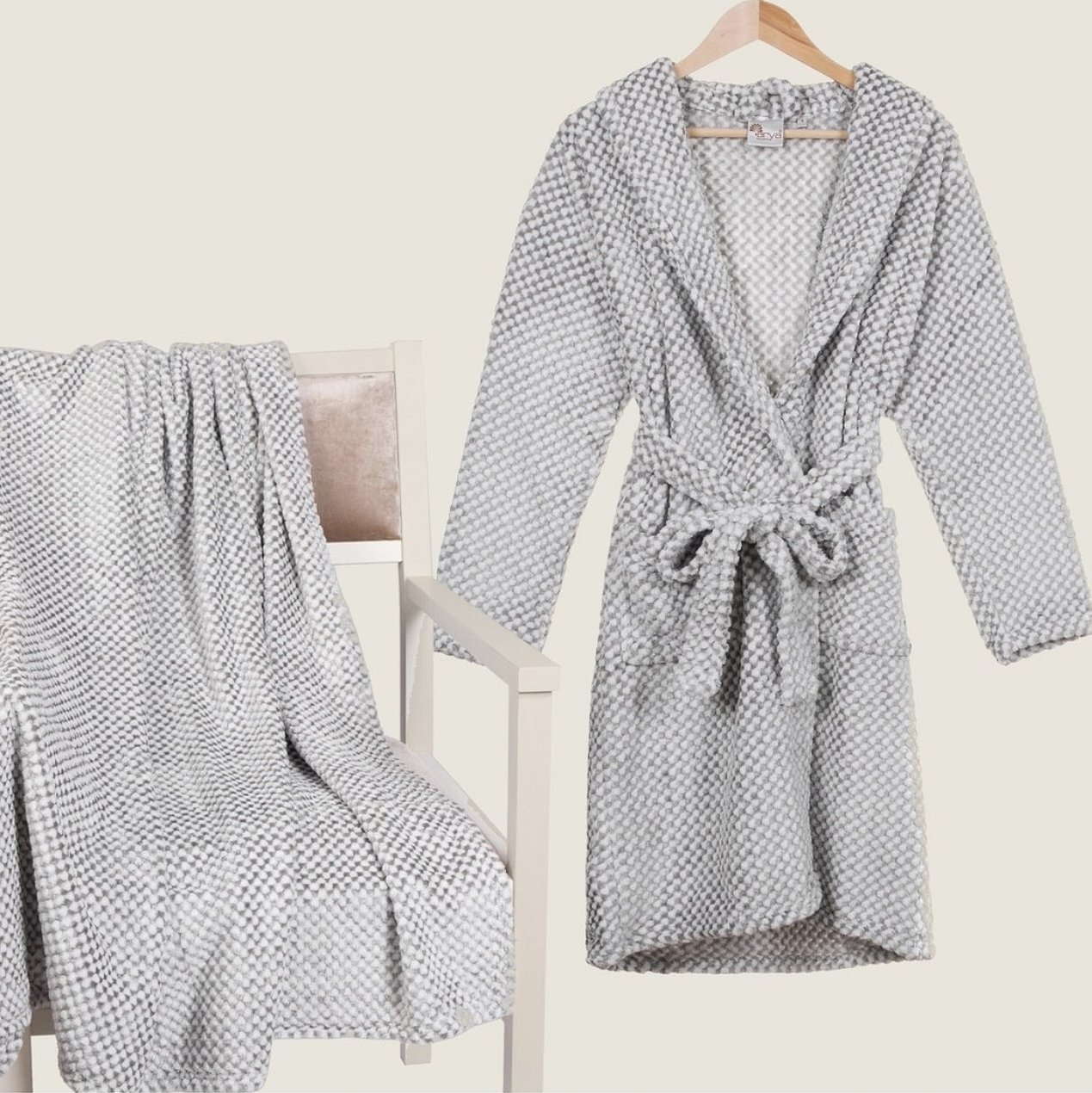
If the product is standard, for home use, it is advisable to buy fabric with equal double-sided colors. Because mostly housecoats have a hood. And the design is such that the inside of the hood will be visible from the face. When the product is worn from time to time, it will not always be noticeable.
Constantly contemplating the inner side, which is very different from the front, can look ridiculous.
Taking measurements
To easily take measurements for a future product, you need to use a regular T-shirt. It is important that it fits easily and does not restrict movement. If the material has already been purchased, then all measurements can be indicated directly on it.

If the canvas is not yet available, then tracing paper, Whatman paper or other paper is needed. This method is only good when the product fits well on the body and is pleasant to use. Step-by-step execution of the pattern:
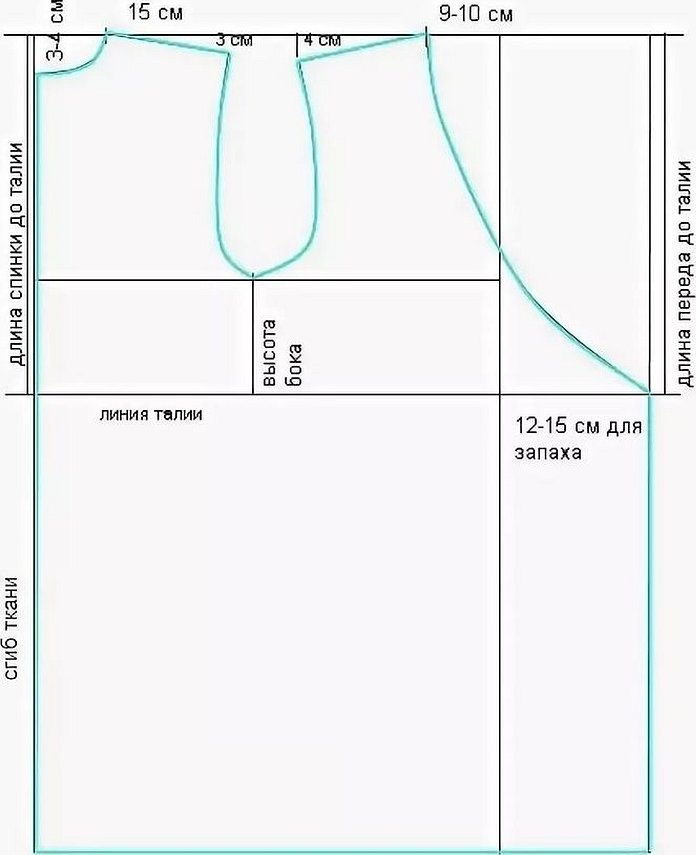
- Fold the ironed T-shirt in half, fold the sleeves down along the seam line;
- Place the T-shirt on paper or canvas and fix it with pins. Transfer all the lines to paper or directly to the material, choose the length of the robe, make an allowance for freedom of fit, if necessary, about 2-3 cm. Do this operation first in the front, then in the back;
- If you need to sew a one-piece sleeve, you do not need to fold the T-shirt sleeve, outline its upper side and draw a line to the required length. Choose a practical armhole width for yourself and the sleeve size along the edge to mark its lower line;
- Make a pattern for the facing - this is necessary to make the fastener more durable. The zipper is sewn to the robe using the facing. To make them, you need to cut out a rectangular element equal to the length of the front from the neck to the hem and 10 cm wide. Make 2 more of the same pieces from interlining in advance;
- If you need to sew a hood, then an old product will also work here, you need to turn it inside out, fold it in half and draw a hood line. The size is adjusted according to your own preferences. It is important that the lower side is the size of the neck, this will be easier to do after the upper seams are made on the product;
- Now you need to sew the pockets. They can have different shapes, round or square, have any depth;
- Now the sleeves are made. They can be cut off from an old T-shirt and sewn on, this is the fastest option, suitable for beginners. Or you can make a sleeve from scratch;
- First, you need to measure the armhole in the already stitched robe;
- Draw a horizontal segment, mark point A in the middle of it and draw a line upwards, equal to the length of the armhole, divided by three and minus 7 cm, and indicate mark A1.
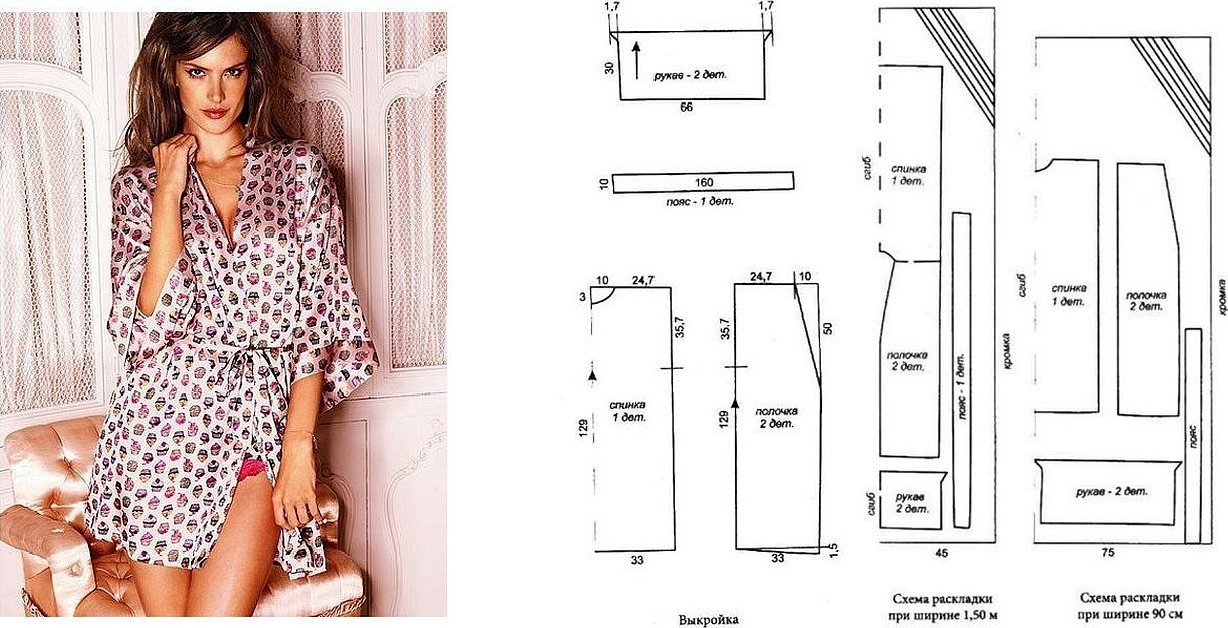
Applying measurements to fabric
Iron the material and cut off the excess, then you can apply measurements to create a drawing of the robe. If the cutting is done without patterns, then first you need to make a mark on the back.
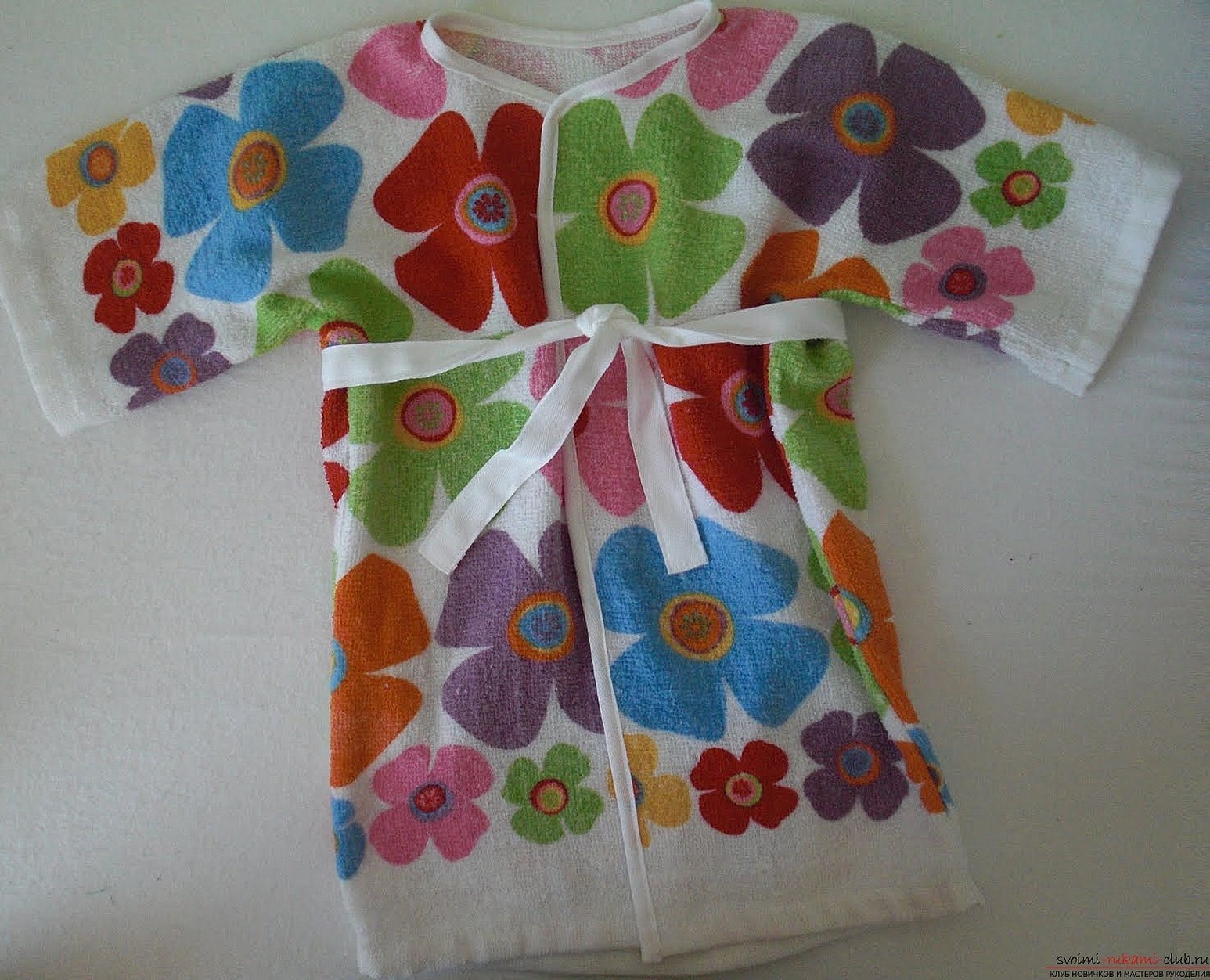
Attention! From the edge of the fabric indicate the waist line; the size varies depending on the length of the robe.
Below is how to sew a simple robe without a pattern.
Sewing the product
The simplest version of a robe is sewing without using sleeves. You need to make the top seams between the back and the front. Instead of buttons, you can sew on a regular knitted belt.
The base of the product is a simple rectangle. The width will be equal to the hip circumference plus 9 cm. For the wrap, you need to leave 20 cm, the length of the robe can be different.
The height of the barrel will be approximately 18 cm. This value is chosen at will, as is the depth of the neck.
Step by step sewing process:
- overlock the armholes;
- sew the front and back of the product;
- the edges of the product are processed manually;
- if it is necessary to make an invisible fastener, it should be located at the waist line;
- treat the front and neck with finishing fabric;
- fold the hem and iron.
You can also make a robe from a blanket without sewing, in which case you don’t even have to buy the material. You can take some old bedspread with an interesting pattern.
Processing
All edges of the robe can be finished with satin ribbon or tapes. If the product is thin, you can use lace. It will look quite delicate and beautiful.
It is important to remember that if the robe was sewn by hand, without using a machine, then it should be washed carefully. If the threads were not tightly pulled, then when using a washing machine they may begin to fluff and shine. Therefore, it is better to wash thin items by hand in a basin, adding a small amount of liquid powder. You can dry both indoors and outdoors. But it is desirable that the sun's rays do not fall on the fabric.
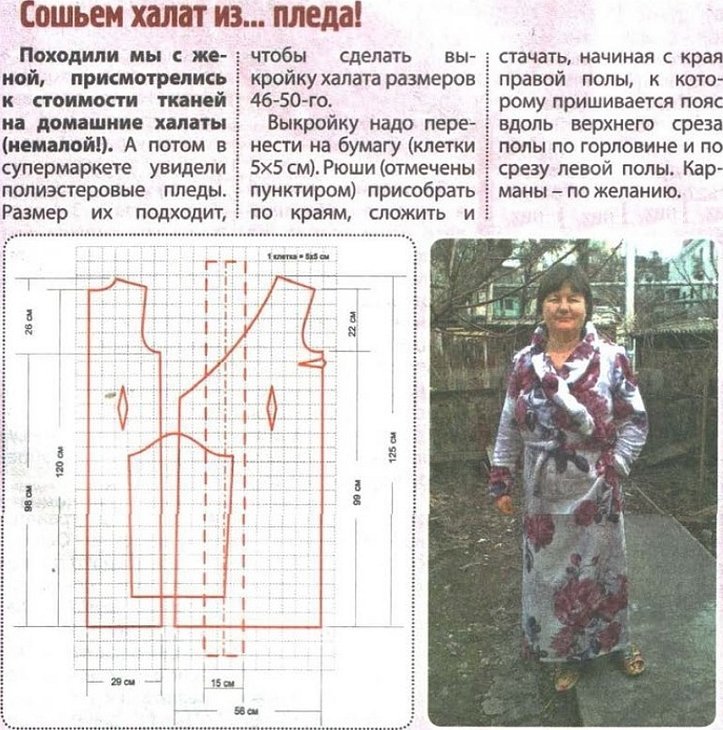
In conclusion, it should be noted that any woman can sew a robe with her own hands without a pattern quickly and easily, especially if you need to practice your handicraft skills. Such a product can be made for any time of the year. Despite the fact that there is no drawing, the thing looks really nice. It is only important to take measurements correctly and make a wrap. Old blankets, towels, T-shirts or dresses can be used as fabric.




